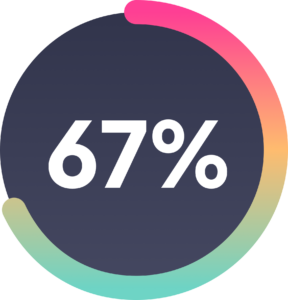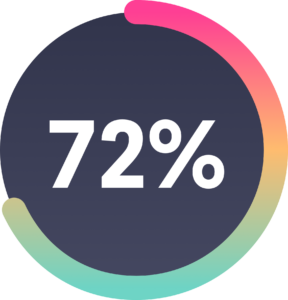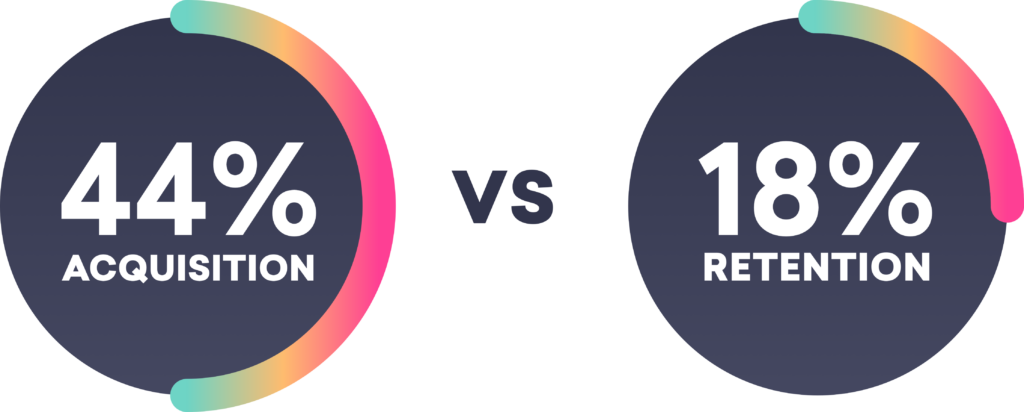THERE’S NO WAY AROUND IT – YOU NEED A QUALITY LOYALTY PROGRAM FOR 2023 AND BEYOND
Let’s face it, from both a personal and a professional standpoint, we are all feeling the squeeze of inflation. Almost all of us are spending less, overall, with most of what we are spending going strictly towards essentials. With the decline of gas prices has come a rise in egg prices which is a great metaphor for how we spend: we may be able to go out and drive, again, but once we reach a destination it’s not like we can afford much of anything. Unless, of course, you happen to be a member of a company’s loyalty program.
I think we all have a favorite grocery store that we go to because of their loyalty program or gas station brand that we frequent because of the fuel perks that come with consistent fill ups. Oftentimes, these two things may actually go hand-in-hand and work together to help save you even more money.
Which is precisely how consumers are shopping while dealing with inflation today. They’re looking to save money, first and foremost, and they’re looking for the most convenient way to do so. Simply having a loyalty program is no longer good enough and as the world becomes more and more digitized, convenience and practicality are two things that will set your business apart from your competition.
Here are 7 things to look for to have a successful loyalty program in 2023.
1. YOUR AREA OF FOCUS SHOULD BE YOUR CUSTOMERS – NOT YOUR COMPETITION
Simply copying what your competition is doing does not automatically guarantee that you will be able to replicate their results. If you’re going to look at your competition’s loyalty program, look at what they’re doing objectively and figure out a way to make your program better for your customers.
By focusing on the needs of your customers, you gain insights which allow you to effectively highlight the shortfalls of your competitors. To take this a step further, interacting with your customers can help you identify issues early, find out what is working well, and recognize areas for improvement – all of which will help you create a stronger loyalty program than your competitors.
2. A GOOD USER EXPERIENCE CAN MAKE ALL THE DIFFERENCE
How are your customers currently using your loyalty program? Are they able to access it through a mobile app? Online? Do they receive notifications (push, sms, emails) about how many points they have, what they can do with their points, when their points are going to expire? Do your loyalty points expire? Are you utilizing multiple loyalty tiers? Is there any sort of gamification tied in with your loyalty program?
All of this is to say, there are a lot of things to consider when it comes to a good user experience. It’s important to think through every aspect of how your customers are currently interacting with your loyalty program and how they are going to interact with it in the future.
3. LOYALTY PROGRAM REWARDS = BRAND LOYALTY
Brand loyalty is a key to combating inflation and a gesture of affection can go a long way. With persistent inflation driving customers to debate who they’re loyal to, give your customers a reason not to think twice. Rachel Steinhardt, a research director at Gartner stated that, “Consumers are fatigued from the constant comparison shopping and re-assessing of value. Your would-be loyal customers — the ones you’d like to retain — want clear and obvious reasons to keep you in their consideration set.”
It doesn’t matter if your company is considered a “luxury” brand or if it falls into the category of “essential shopping” – provide your customers with exclusive perks and promotions which will keep them coming back to your brand regardless of inflation and regardless of your competition.
It’s important to note, too, that a loyalty program is different from an incentive program. An incentive program incentivizes people to sign up (save $5 on your first $30 order!) and then offers zero rewards for continued loyalty. Having incentive to sign up is great but if there is no incentive to continue utilizing a company’s loyalty program then a customer will find a company that will reward them for their loyalty.
4. GOING THE EXTRA MILE GOES A LONG WAY
Consumers are more loyal to brands when they feel like a brand understands them as an individual. Loyalty is a two-way street and through personalization, you’re able to show your customers that you are loyal to them, as well. The added bonus of this is that by identifying the value propositions that are most important to your customers, companies have the ability to implement strategic incentives into their personalized loyalty programs.


According to research from Adobe Commerce, 67% of respondents say that, whether shopping in-store or online, they want personalized offers based on their individual spending habits. And for those who have received personalized recommendations, 72% said they bought more goods than they originally planned.
When it comes down to it, it’s really quite simple: if you reward your customers with personalized offers, they’ll reward you.
5. CONSISTENCY IS KEY
With personalization comes consistency. When it comes to making purchasing decisions, customers today have more power than ever. As customer journeys increasingly continue to take place across multiple channels in real-time, it’s imperative that a company has the ability and the technology in place to operate in “real-time.” Your data has to be able to work for you immediately so that you can better orchestrate a customer’s next best action in their customer journey.
Providing a positive, consistent customer experience impacts a customer’s willingness to be loyal and encourages customers to come back more frequently.
6. GREAT VALUE MAKES FOR A GREAT LOYALTY PROGRAM
At the end of the day, what is the most important thing to a consumer when it comes to a loyalty program? What value are they getting out of it? Customers join loyalty programs for the simple fact that they want to get value out of the program.
Maybe you’ve got a customer who already shops at your business on a frequent basis and they figure they might as well join your loyalty program in order to save money, reap the rewards, etc.
At the same time, you may have a possible customer who’s looking for the right reason, the right value to shop at a particular business. They could be between your company and your main competitor and their decision could solely be based on, “who offers the better discounts/rewards?”
Point being, your loyalty program needs to provide a value that is worth both your customer’s time and investment. If it isn’t then a customer will find a loyalty program that is.
7. COMBINING ALL OF THESE POINTS MEANS BETTER CUSTOMER RETENTION
Putting all of these tips together means creating a well-functioning loyalty program that’s bound to drive the most important thing of all: customer retention.

According to Invesp, “It’s a well-established fact that 44% of companies have a greater focus on customer acquisition vs. 18% that focus on retention. Also, it’s true that only 40% of companies and 30% of agencies have an equal focus on acquisition and retention.”
This is in addition to a recent post from Outbound Engine, which mentions that acquiring a new customer can cost FIVE TIMES more than retaining an existing customer. To put this into even more perspective, Harvard Business Review released a study which stated that, “Depending on which study you believe, and what industry you’re in, acquiring a new customer is anywhere from five to 25 times more expensive than retaining an existing one.”
Repeat customers spend 67% more money than new customers, they shop more frequently, they’re easier to sell to, and they have a habit of promoting your business – for free
Taking all of this into account, why aren’t more companies putting more of an emphasis into customer retention? And are you doing enough on your end?
If not – how can Magnetic Mobile help?




